There are all 7 new wonders of the world recorded. This is not an official list, however, there are some lists made by private organizations, such as the “New7Wonders of the World” campaign organized by the New7Wonders Foundation, which chose the following wonders in 2007. Below is a list of the new wonders of the world:
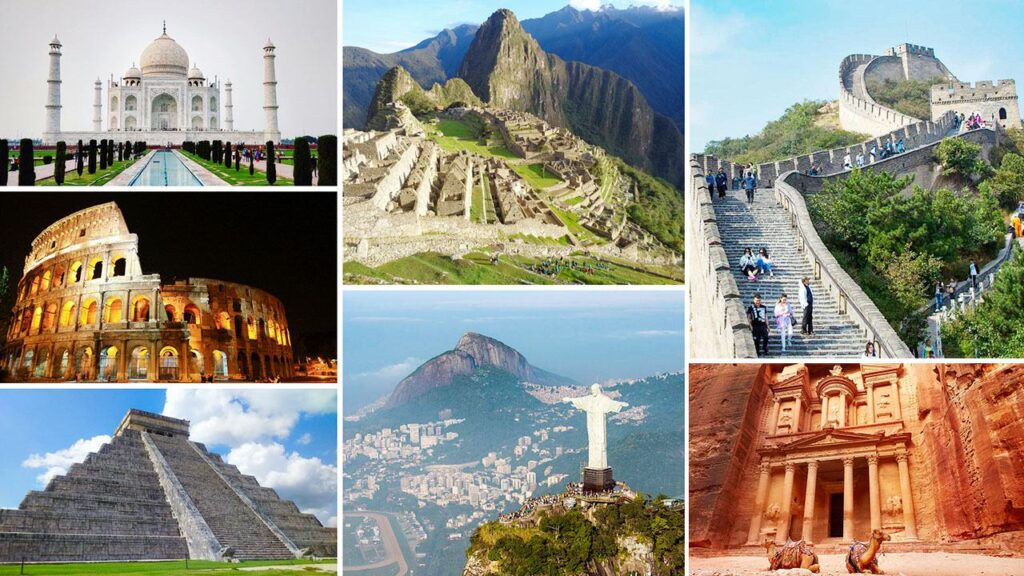
Top 7 new wonders of the world
1. Great Wall of China
The Great Wall of China is a series of fortifications made of stone, brick, tamped earth, wood, and other materials, generally built along an east-to-west line across the northern borders of China to protect against the raids and invasions of various nomadic tribes.
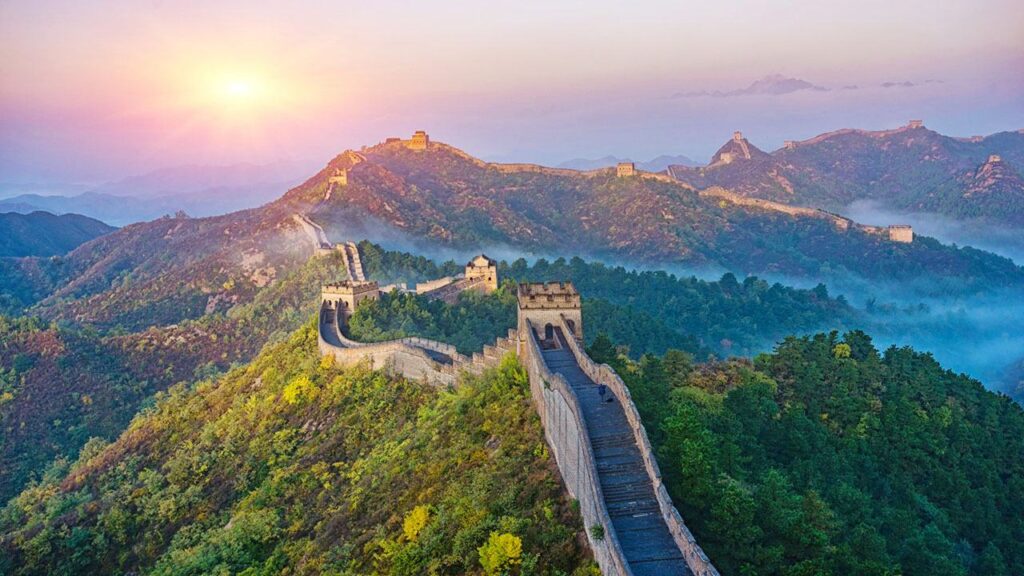
It is the longest wall in the world, stretching over 21,000 km (13,000 miles) and is one of the most famous architectural and engineering feats in human history. The Great Wall is a UNESCO World Heritage Site and a popular tourist destination.
Visiting the Great Wall of China can be a unique and unforgettable experience. It is typically a physically demanding activity as many sections are steep and uneven. The most popular sections for tourists to visit are Badaling, Mutianyu, and Juyongguan, which offer scenic views and varying levels of difficulty. Some areas also offer cable car or chairlift rides for those who wish to minimize the physical exertion.

In addition to the wall itself, many sites also have historical and cultural significance, such as watchtowers, barracks, and beacon towers. It’s also possible to hike along the wall for a more immersive experience.
Visitors should be prepared for large crowds, especially during peak tourist season, and be mindful of the local regulations and guidelines to help preserve the site. Overall, a visit to the Great Wall of China can be a fascinating and awe-inspiring experience that offers a glimpse into the rich history and culture of China.
2. Petra, Jordan
Petra is an ancient city located in Jordan that is renowned for its unique architecture and rock-cut structures. It was carved into red sandstone cliffs by the Nabatean people more than 2,000 years ago and served as an important center of trade and culture. Petra was designated a UNESCO World Heritage Site in 1985 and is one of the most visited tourist attractions in Jordan.
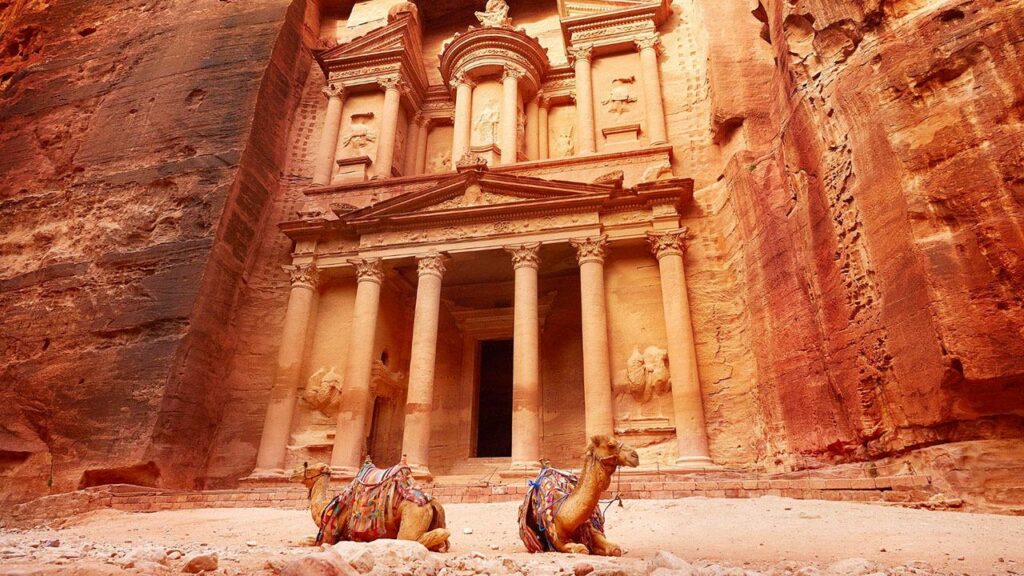
Visitors to Petra enter through the narrow Siq, a winding path that leads to the city’s main attraction, Al-Khazneh (The Treasury), a stunning temple carved into the rock face. Other notable sites within Petra include the Monastery, the Royal Tombs, and the Roman Theater.
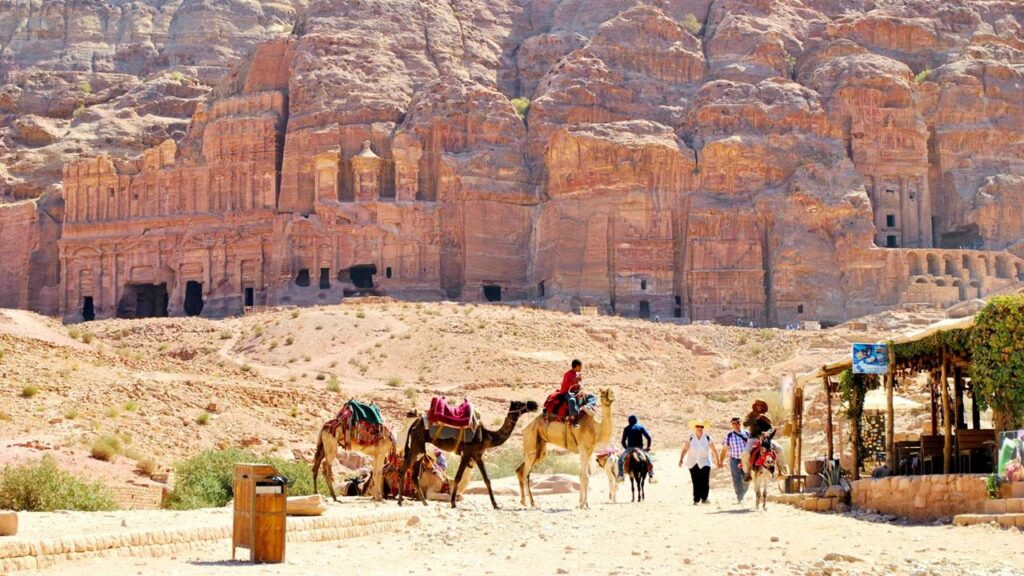
Petra offers a unique blend of natural beauty and man-made wonders, and visitors can spend hours exploring the various sites and taking in the stunning views. It is recommended to wear comfortable shoes and bring plenty of water, as some areas can be strenuous to walk, and the weather can be hot. Overall, a visit to Petra is a once-in-a-lifetime experience that offers a fascinating glimpse into the history and culture of the ancient world.
3. Christ the Redeemer statue, Rio de Janeiro, Brazil
The Christ the Redeemer statue is a large Art Deco statue of Jesus Christ located in Rio de Janeiro, Brazil. The statue stands 38 meters (120 feet) tall and is located at the top of the 700-meter (2,300-foot) tall Corcovado Mountain, offering panoramic views of the city and the bay. It is one of the most famous landmarks in Brazil and is a symbol of the country’s Catholicism.

The statue was completed in 1931 and has since become a major tourist attraction, attracting millions of visitors each year. Visitors can take a train or taxi to the base of the mountain and then take a staircase or elevator to the top. The viewing platform offers breathtaking views of Rio de Janeiro and the surrounding area.

Visiting the Christ, the Redeemer statue is an unforgettable experience and offers a unique opportunity to appreciate the beauty of Rio de Janeiro from a different perspective. Visitors should be prepared for crowded conditions and should plan ahead for the best time to visit, as wait times can be long, especially during peak tourist season.
4. Machu Picchu, Peru
Machu Picchu is an ancient Inca city located in the Andes Mountains of Peru. The site is located high in the mountains, at an altitude of 2,430 meters (7,970 feet) above sea level and is considered one of the most significant archaeological sites in South America. It was built in the mid-15th century and was abandoned just a few decades later, remaining unknown to the outside world until 1911.
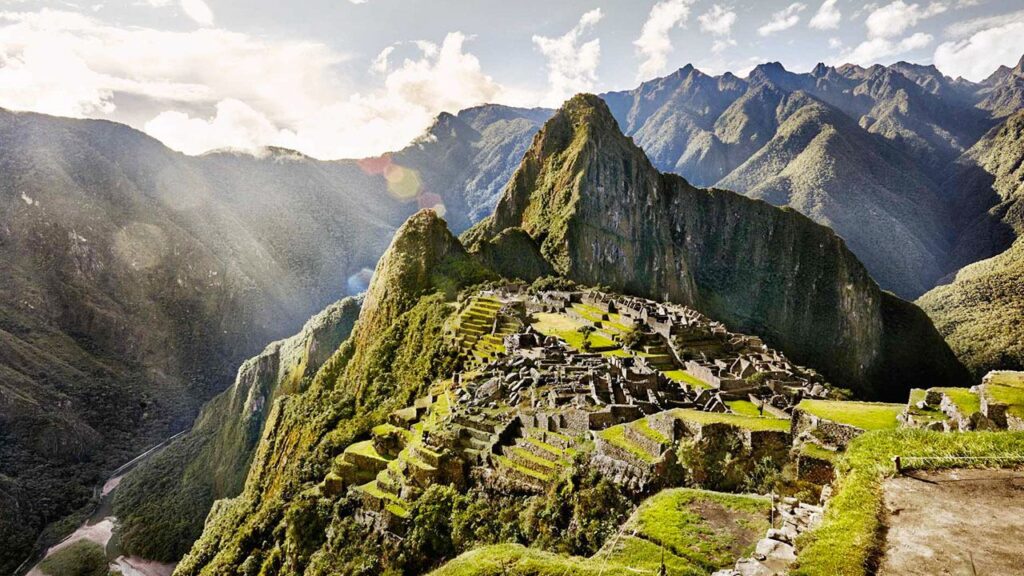
Machu Picchu is known for its unique architecture, which blends seamlessly into the natural surroundings, and its sophisticated agricultural, hydraulic, and architectural systems. Visitors to the site can hike along ancient trails, explore the ruins of the city, and appreciate the stunning views of the surrounding mountains and valleys.
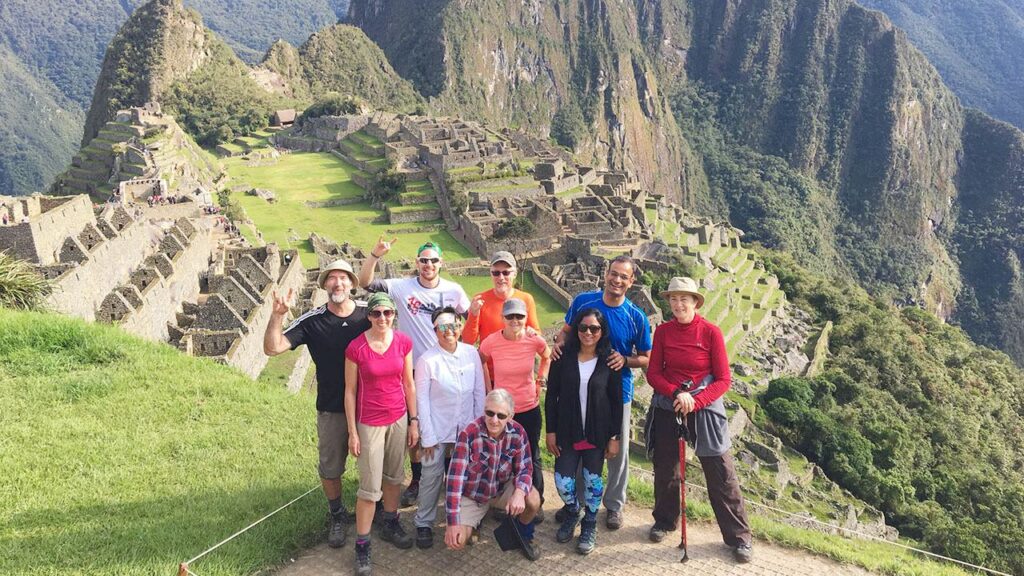
Visiting Machu Picchu requires some physical effort, as the site is located at high altitude and some trails can be steep. There are two main ways to reach Machu Picchu: by hiking the Inca Trail or by taking a train to the nearby town of Aguas Calientes and then taking a bus to the site. Visitors should be prepared for crowded conditions, especially during peak tourist season, and should plan ahead for the best time to visit. Overall, a visit to Machu Picchu is a once-in-a-lifetime experience that offers a glimpse into the rich history and culture of the ancient Inca civilization.
5. Chichen Itza, Mexico
Chichen Itza is an ancient Mayan archaeological site located in the Yucatán Peninsula, Mexico. It was one of the largest Mayan cities and served as a center of politics, religion, and commerce in the region. The site contains several notable structures, including the Temple of Kukulcan (also known as El Castillo), a large pyramid that is one of the most recognizable symbols of the ancient Maya civilization.
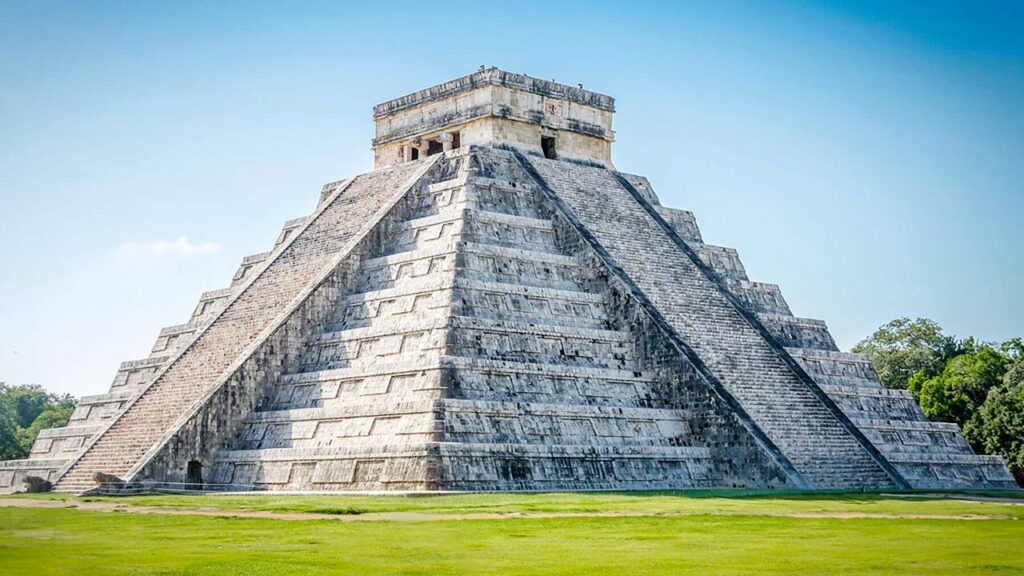
Chichen Itza is considered one of the most important archaeological sites in the world and is a popular tourist destination. Visitors to the site can explore the ruins of the city, learn about the history and culture of the ancient Maya, and appreciate the architectural wonders of the structures.
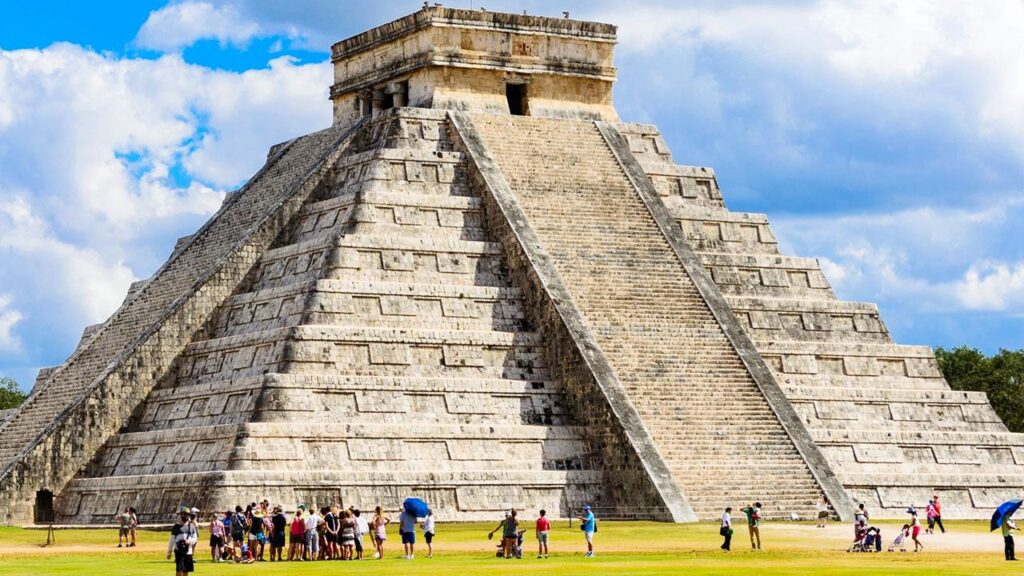
Visitors to Chichen Itza should be prepared for hot and sunny weather, as the site is located in a tropical region. It is recommended to bring plenty of water and wear comfortable shoes, as some areas can be strenuous to walk. Crowds can be large, especially during peak tourist season, so it is recommended to plan ahead for the best time to visit. Overall, a visit to Chichen Itza is a unique opportunity to learn about and experience the rich history and culture of the ancient Maya civilization.
6. Roman Colosseum, Rome, Italy
The Roman Colosseum, also known as the Flavian Amphitheatre, is a massive stone amphitheater located in Rome, Italy. It was built in the first century AD and was used for gladiatorial contests and public spectacles, including animal hunts and mock sea battles. The Colosseum is considered one of the greatest architectural masterpieces of ancient Rome and is one of the most recognizable symbols of the city.
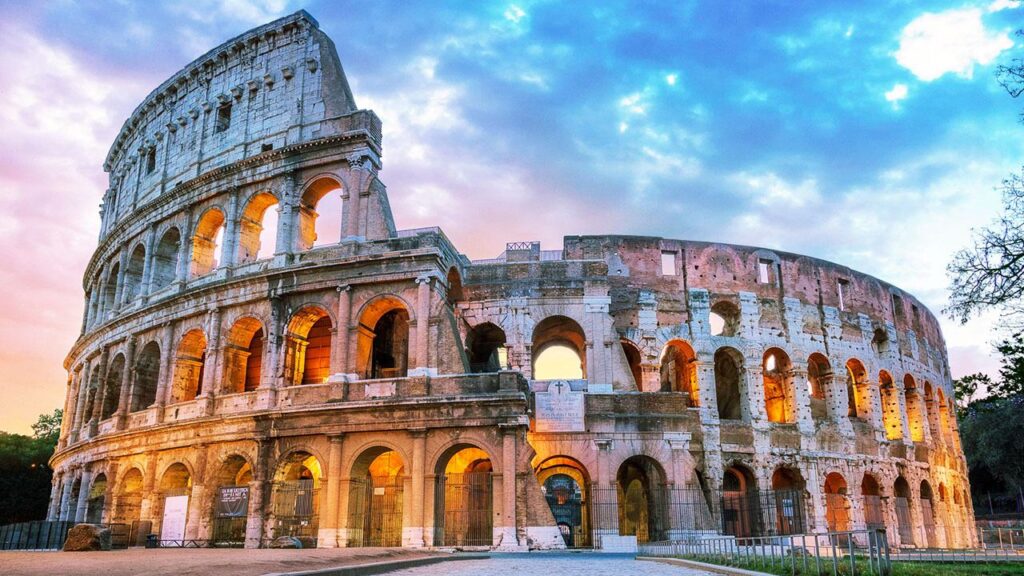
The Colosseum is a popular tourist destination, attracting millions of visitors each year. Visitors to the site can explore the interior of the amphitheater, including the underground chambers where animals and performers were housed, and appreciate the scale and design of the structure. The Colosseum is also a popular spot for visiting during the evening, when it is illuminated and offers stunning views of the surrounding area.
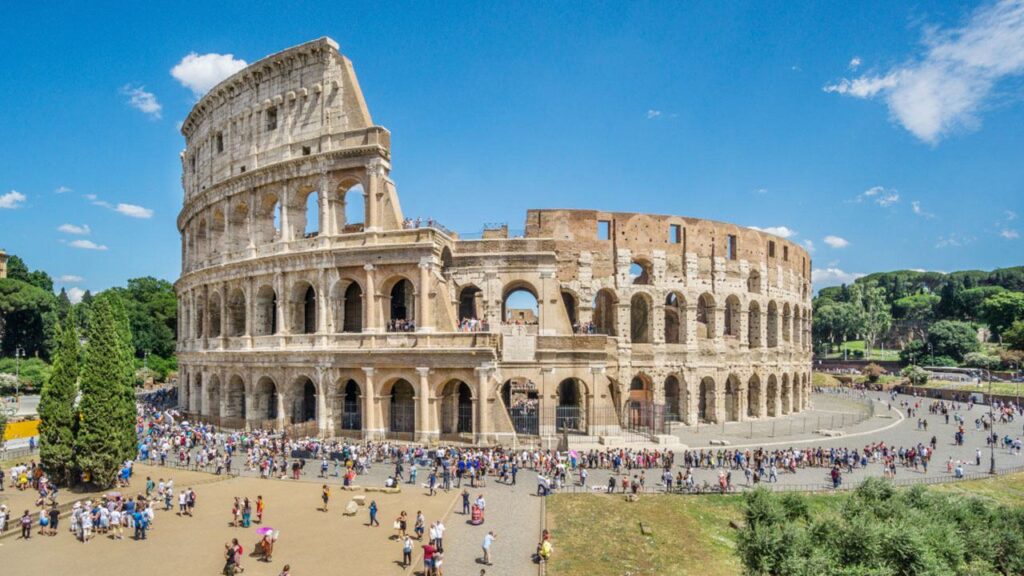
Visitors to the Colosseum should be prepared for crowds, as the site is one of the most popular tourist attractions in Rome. It is recommended to plan ahead for the best time to visit and to purchase tickets in advance to avoid long wait times. Overall, a visit to the Roman Colosseum is a unique opportunity to experience the rich history and culture of ancient Rome and to appreciate the architectural marvel of one of the world’s greatest amphitheaters.
7. Taj Mahal, Agra, India
The Taj Mahal is a mausoleum located in Agra, India. It was built in the 17th century by the Mughal Emperor Shah Jahan in memory of his late wife, Mumtaz Mahal. The Taj Mahal is widely considered one of the greatest examples of Mughal architecture and is one of the most iconic and recognizable buildings in the world.
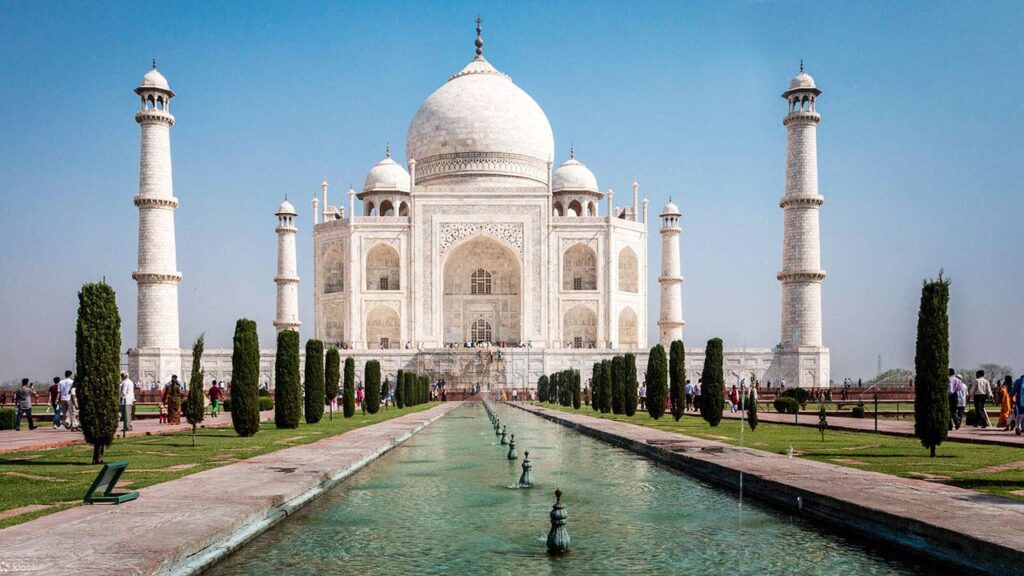
The Taj Mahal is a UNESCO World Heritage Site and is one of the most visited tourist attractions in India. Visitors to the site can appreciate the stunning architecture of the mausoleum, including its intricate inlay work and lush gardens. The Taj Mahal is best visited in the early morning or late afternoon, when the light is best for photography and the crowds are at their lowest.
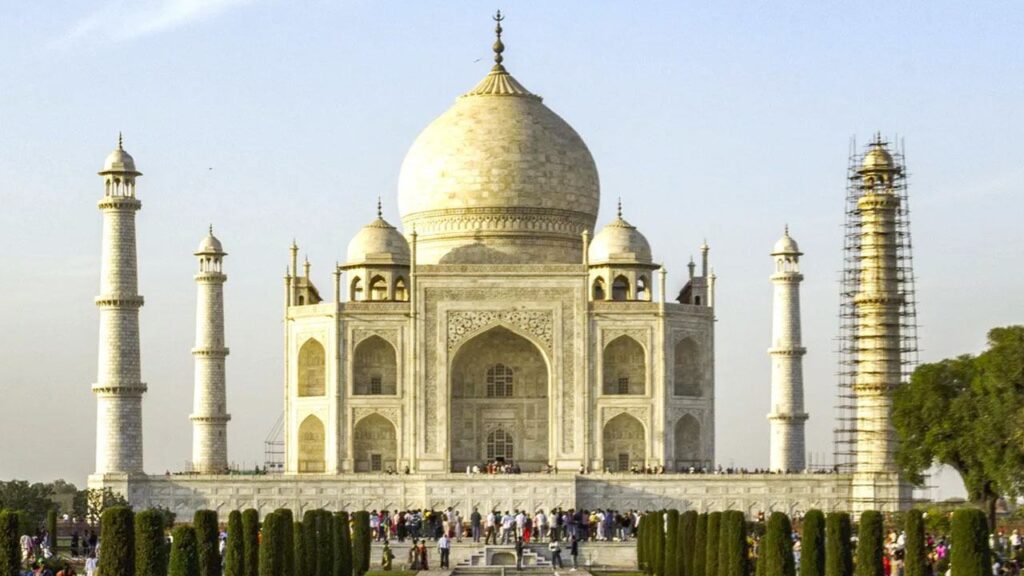
Visitors to the Taj Mahal should be prepared for crowded conditions, as the site can be very busy, especially during peak tourist season. It is recommended to plan ahead for the best time to visit and to purchase tickets in advance to avoid long wait times. Overall, a visit to the Taj Mahal is a unique and unforgettable experience, offering a glimpse into the rich history and culture of India and a chance to appreciate one of the world’s greatest architectural wonders.
What organization is New7Wonders?
New7Wonders is a global initiative aimed at selecting the “New Seven Wonders of the World.” The initiative was launched in 2000 and involved a global poll in which millions of people voted for their favorite monuments, structures, and natural wonders from a list of 21 finalists. The final list of the New Seven Wonders of the World was announced in 2007 and included the following sites:
- The Great Wall of China
- Petra, Jordan
- Christ the Redeemer statue, Rio de Janeiro, Brazil
- Machu Picchu, Peru
- Chichen Itza, Mexico
- The Roman Colosseum, Rome, Italy
- The Taj Mahal, Agra, India
The New7Wonders initiative has been criticized for its selection process, which was based on public voting, and for its commercialization of the world’s heritage sites. However, it has also been credited with raising awareness of the importance of preserving and protecting our cultural and natural heritage, and for encouraging millions of people to explore and appreciate the world’s greatest wonders.


